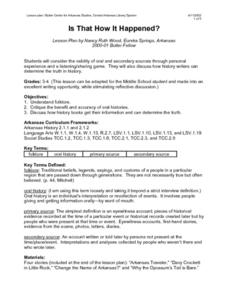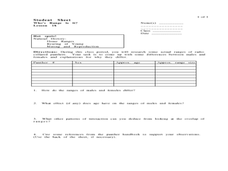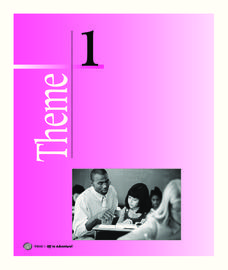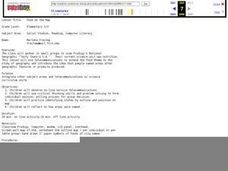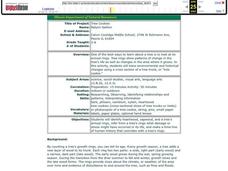Curated OER
Maps Can Help Us
First graders explore the geography of Montana by analyzing geographic maps of the area. In this Native American reservation lesson, 1st graders discuss the similarities and differences between reservations in the state of Montana....
Curated OER
The Extinction and Rediscovery of the Ivory-Billed Woodpecker
An incredibly thorough, and well-designed lesson teaches youngsters about the presumed extinction and rediscovery of the ivory-billed woodpecker in Arkansas. Learners discuss the environmental factors that led to the birds disappearance....
Curated OER
My Arkansas Family Tree
Here is a two-part lesson plan that introduces learners to genealogy by having them create family trees, and map the movements of their ancestors. While this resource is designed for kids who live in Arkansas, it certainly can be adapted...
Curated OER
Teaching Controversial Science Issues Through Law Related Education
Discuss the differences in dialogue and debate when considering a controversial topic. Your class can work in small groups to complete a guided discussion of this controversial topic and then participate in a simulation of the Scopes...
Curated OER
Families: Different and the Same
Students compare varying family structures. In this family structures lesson, students write a book about their family. Students read The House on Mango Street.
Curated OER
Riding the Pony Express
Fourth graders list the four W's of the Pony Express. They also write an article about Buffalo Bill Cody and discuss the important facts about the Pony Express.
Curated OER
Compass Rose
Second graders practice identifying the four cardinal directions. After locating a compass rose on a map, 2nd graders explain each point that corresponds to a direction. Using a toy ship as a manipulative on a map, students observe its...
Curated OER
Osage, Legend, and Arkansas History
Elementary schoolers evaluate the legend of Norristown Mountain by looking at facts about the Osage Indians and the legend itself. They do an exploration of Arkansas' Native American groups which includes a look at their legends,...
Curated OER
Is That How it Happened?
Younsters are exposed to classic stories of Arkansas Folklore including The Arkansas Traveller, and Davy Crockett. They discuss if the stories they hear are examples of folklore, or some other kind of story. Then, each puil is required...
Curated OER
Who's Range is it?
Students investigate the habits of panthers by analyzing radio transmitted data. In this animal life lesson, students utilize computers to view the range of different statistics dealing with Florida panthers. Students...
National Park Service
Fitting In
Birds help other birds find food? Scholars are placed into one of five groups of different birds. Each group then "feeds" on letters of paper in a field and gather five pieces per person. As each group plays, more food is exposed,...
Curated OER
Home in the Desert: Lesson for Use with This House is Made of Mud
Third graders examine how a family modifies their environment to create a home out of mud. They read the book "This House is Made of Mud" by Ken Buchanan, and write a description of their own home that compares the home of mud to their...
Curated OER
What's in a Name?
Students explore the plants that grow in Glacier National Park. In this plant biology instructional activity, students invite a guest speaker to speak about plants that grow in Glacier National Park, as well as the scientific names for...
Curated OER
A GREAT SPORT
Students explore how diverse groups and individuals have contributed to the cultural development of Canada, and then produce two-dimensional works of art.
Houghton Mifflin Harcourt
Off to Adventure!: Challenge Activities (Theme 1)
Off to Adventure! is the theme of an English language arts unit comprised of a variety of challenge activities. Scholars enhance skills and reinforce concepts by taking part in a grand book discussion, giving an oral...
Curated OER
1846: Portrait of America in the Time of Don Pasquale: An Historic Look at American Life During the 1840's
Learners construct an historical timeline extending from 1840-1850. They discuss various people, places, and events on their timelines.
Curated OER
Over in the Meadow
Students discover how to locate books on meadow and pond animals and research them. Students discover how to locate fiction/story books about the animals mentioned in the counting book read. Students discover how to locate by author,...
Curated OER
Food on the Map
Students work together to examine the tastiest towns in the United States. After discovering the names of the equipment, they identify the seven continents. They take a survey and locate the cities and states of the foods mentioned.
Curated OER
Tree Cookies
Students identify heartwood, sapwood, and a tree's annual rings, infer from a tree's rings what damage or stress might have occurred in its life, and make a time-line of human history that coincides with a tree's rings.
Curated OER
The Magic School bus Inside A Hurricane
Students investigate the concept of a hurricane by using the cartoon series "The Magic Schoolbus" to simulate the fantasy of traveling through a hurricane. The instructional activity uses a KWL graphic organizer in order to guide student...
Curated OER
A Tough Nut to Crack
Sixth graders explore agriculture by examining world geography. In this pecan cultivation lesson, 6th graders identify the history of the famous nut and the impact it has on the U.S. economy, diet and human body. Students define...
Curated OER
Too Bee Or Not To Bee
Students recognize that bees are important in the reproduction of plants and to the survival of animals. In this bee lesson, students become familiar with the parts of bees and how those adaptations help them pollinate plants....
Curated OER
Free at Last: Dr. Martin Luther King, Jr.
Students view the "I Have A Dream" speech by Martin Luther King, Jr. They use the Internet to research Martin Luther King's life and work.
Curated OER
Mixing It Up!
Third graders identify the different states of matter. In this science lesson, 3rd graders describe the different components of solutions and mixtures. They create emulsions, foams and suspensions in the lab.








